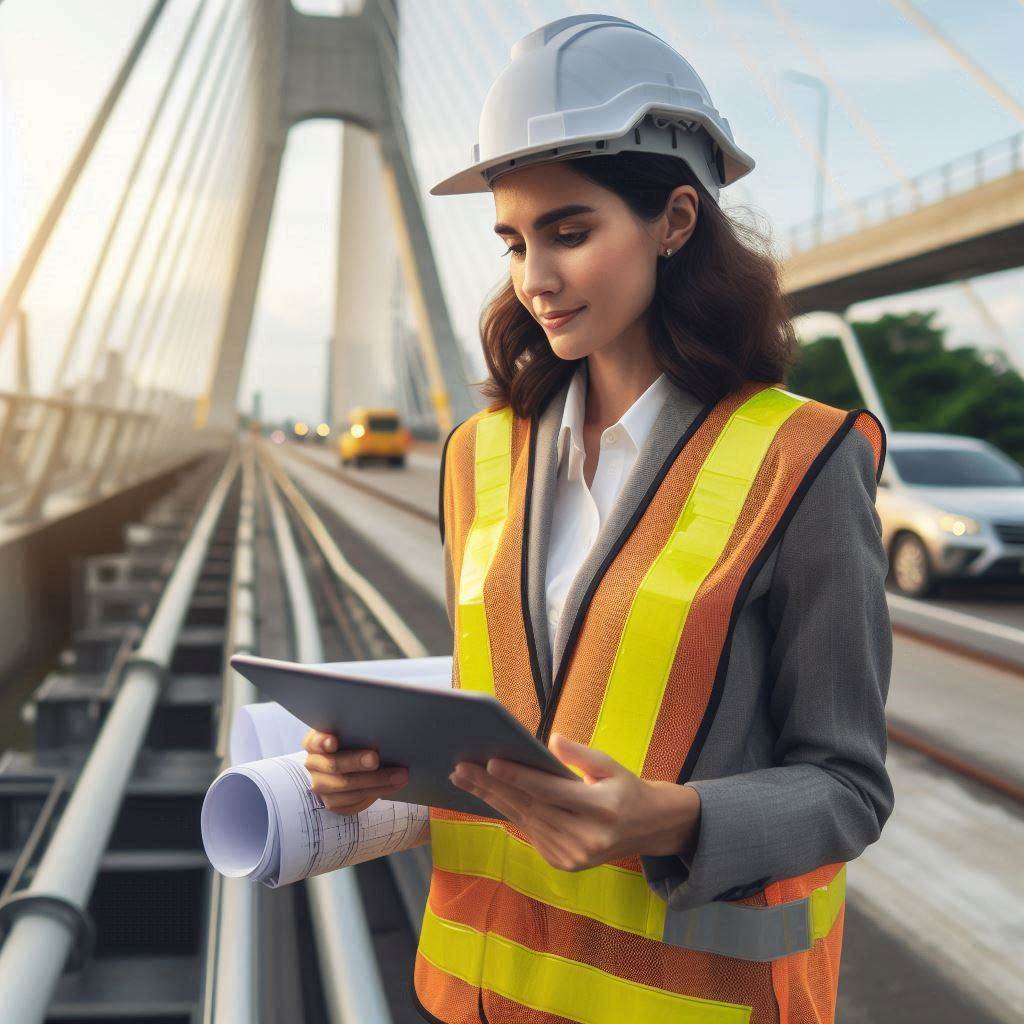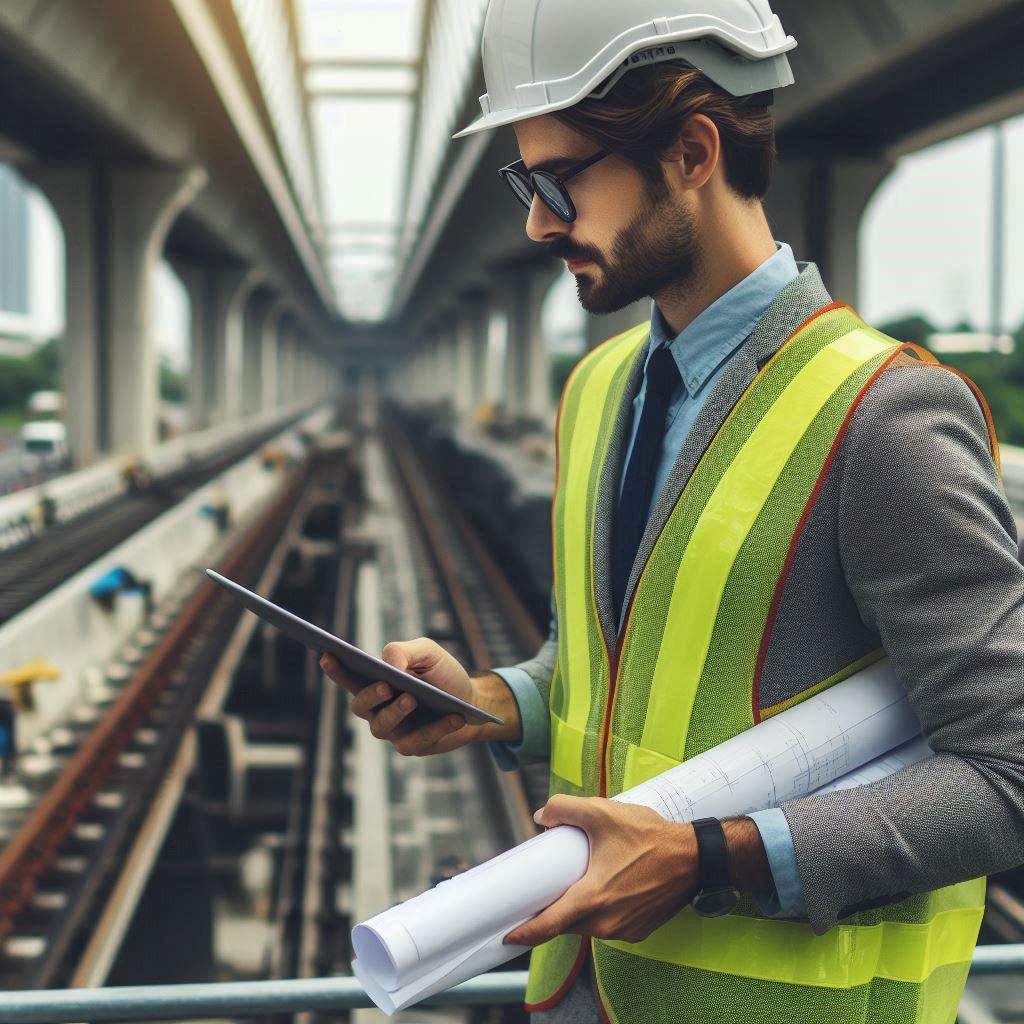Introduction
Technology has revolutionized transportation engineering, transforming how we plan, design, and manage transportation systems.
Modern innovations, such as intelligent transportation systems and autonomous vehicles, have significantly improved efficiency and safety.
These advancements have led to smarter traffic management, reduced congestion, and enhanced passenger experiences.
Innovative technologies like real-time data analytics and GPS tracking have streamlined operations and improved route planning.
Smart infrastructure, including adaptive traffic signals and automated toll collection, has further optimized traffic flow and reduced operational costs.
Electrification and alternative fuels have contributed to a more sustainable and environmentally friendly transportation network.
Despite these advancements, there is a pressing need for continued innovation.
The rapid pace of technological change means that transportation systems must evolve to keep up.
Emerging technologies such as blockchain, artificial intelligence, and 5G connectivity offer new opportunities to enhance transportation systems further.
Ongoing integration of these technologies is crucial for addressing future challenges.
As urban populations grow and demands on transportation systems increase, innovative solutions will be essential to ensure efficient and sustainable mobility.
Embracing technological advancements will help create smarter, safer, and more resilient transportation networks.
Evolution of transportation technology
How Transportation Technology Has Evolved Over Time
Transportation technology has evolved remarkably, reshaping how we move and connect.
Early innovations laid a foundation for today‘s sophisticated systems.
In the 19th century, steam engines emerged, transforming rail travel.
These engines made long-distance journeys quicker and more efficient, marking the beginning of modern transportation.
The early 20th century brought the automobile revolution.
Henry Ford‘s assembly line production made cars affordable, democratizing personal transportation.
This shift allowed people to travel independently, altering urban planning and lifestyle.
Highways and interstates developed, enhancing road travel and boosting economic growth.
The mid-20th century saw the aviation revolution.
Jet engines and commercial airlines made air travel faster and more reliable.
Airplanes connected distant regions, shrinking the world and expanding global commerce.
This period also saw the construction of larger airports and more efficient air traffic control systems.
Significant Advancements in Transportation Engineering
Recent decades have seen significant advancements in transportation engineering, driven by digital technology.
GPS systems have revolutionized navigation, allowing for real-time route adjustments and improved travel efficiency.
Navigation apps provide up-to-date traffic information, helping drivers avoid congestion and reach their destinations faster.
Autonomous vehicles represent a major leap forward.
These self-driving cars use advanced sensors and AI to navigate roads safely.
They promise to reduce accidents caused by human error and enhance traffic flow.
Companies are testing and deploying these vehicles, moving us closer to a future with driverless transportation.
Electric vehicles (EVs) are another breakthrough in transportation engineering.
EVs reduce reliance on fossil fuels and lower emissions, addressing environmental concerns.
Advances in battery technology have extended their range and performance.
The growth of charging infrastructure further supports the widespread adoption of EVs.
Read: Biomedical Engineer: Working in Healthcare Tech
Role of technology in transportation engineering
How Technology Has Revolutionized the Field of Transportation Engineering
Transportation engineering has experienced a profound revolution due to technological advancements.
Early innovations, like the steam engine, marked the beginning of this transformation.
Steam engines powered trains, making long-distance travel faster and more reliable.
The early 20th century brought the automobile, which changed personal and commercial transportation.
Henry Ford’s assembly line made cars affordable and accessible, reshaping society‘s mobility.
The mid-20th century introduced jet engines and commercial aviation, shrinking the globe and enhancing global connectivity.
Air travel became more efficient, reliable, and widespread, connecting continents like never before.
Concurrently, the expansion of highways and interstates facilitated smoother road travel, boosting economic growth and changing urban and rural landscapes.
Impact of Technology on Transportation Systems Design and Management
Technology has profoundly impacted transportation systems design and management.
Modern design approaches now incorporate digital tools and simulations to optimize infrastructure planning.
Engineers use sophisticated software to model traffic patterns and test various scenarios, ensuring that new designs meet future demands.
Intelligent traffic management systems exemplify this transformation.
These systems use sensors, cameras, and data analytics to monitor and manage traffic flow in real time.
By adjusting traffic signals and providing live updates, they reduce congestion and improve road safety.
Such systems also collect valuable data, helping planners make informed decisions about road improvements and expansions.
Public transportation management has benefited from technological advancements as well.
Real-time tracking systems enhance the rider experience by providing live updates on bus and train schedules.
This technology improves reliability and convenience, encouraging higher public transit usage.
High-speed rail networks, enabled by advancements in materials and engineering, demonstrate the potential for rapid, efficient travel over long distances.
Big data and artificial intelligence (AI) further refine transportation management.
AI algorithms analyze vast amounts of data to optimize logistics, route planning, and traffic management.
These technologies improve freight transportation efficiency and urban planning, leading to more sustainable and effective transportation networks.
Read: Biomedical Engineering: Impact on Public Health
Integration of AI in transportation engineering
How artificial intelligence is being used in transportation engineering
Artificial intelligence (AI) has become a game-changer in transportation engineering.
AI technologies are being integrated into various aspects of transportation systems, leading to significant advancements.
For instance, AI algorithms are used in autonomous vehicles to interpret sensor data, make real-time driving decisions, and improve safety.
These vehicles use machine learning to adapt to different driving conditions and continuously enhance their performance.
AI is also revolutionizing traffic management.
Intelligent traffic systems employ AI to analyze data from cameras and sensors, optimizing traffic flow and reducing congestion.
These systems adjust traffic signals in real-time based on current traffic conditions, improving overall road efficiency.
Additionally, AI-driven predictive analytics can anticipate traffic patterns and suggest alternative routes to minimize delays.
Benefits of incorporating AI in transportation systems
Incorporating AI into transportation systems offers numerous benefits.
One of the most significant advantages is enhanced safety.
AI-powered systems can detect potential hazards and respond more quickly than human drivers, reducing the likelihood of accidents.
Autonomous vehicles equipped with AI can navigate complex traffic situations with precision, contributing to safer roadways.
Efficiency is another key benefit.
AI optimizes traffic flow by analyzing real-time data and adjusting traffic signals accordingly.
This leads to smoother traffic movement, shorter travel times, and reduced fuel consumption.
AI also improves logistics and route planning in freight transportation, enhancing delivery speed and reducing operational costs.
Environmental benefits are notable as well.
AI contributes to the development of electric and hybrid vehicles by improving battery management and energy efficiency.
Efficient route planning and traffic management reduce emissions and support sustainable transportation practices.
Furthermore, AI enhances user experience.
Predictive analytics and personalized recommendations offer travelers better information about public transit schedules, ride-sharing options, and real-time updates.
This convenience encourages greater use of public and shared transportation methods, further reducing individual car usage.
Read: Networking Tips for Biomedical Engineers

Sustainable transportation solutions
Technology is aiding in the development of sustainable transportation solutions
Technology plays a crucial role in advancing sustainable transportation solutions.
It helps reduce the environmental impact of travel while improving efficiency.
For instance, the rise of electric vehicles (EVs) reflects a significant shift towards greener transportation.
EVs emit no tailpipe pollutants, and innovations in battery technology are making them more viable for mass adoption.
Enhanced charging networks are further supporting this transition, making EVs more convenient for everyday use.
Another technology-driven advancement is the development of hydrogen fuel cell vehicles.
These vehicles produce electricity through a chemical reaction between hydrogen and oxygen, emitting only water vapor.
Companies are investing heavily in hydrogen infrastructure to make this technology more accessible and practical.
Examples of eco-friendly transportation projects driven by technology
Several eco-friendly transportation projects showcase the power of technology in creating sustainable solutions.
The Hyperloop, proposed by Elon Musk, is one such example.
This high-speed transportation system uses low-pressure tubes to transport pods at incredible speeds, reducing travel time and energy consumption.
While still in development, the Hyperloop promises to be a game-changer for sustainable transportation.
High-speed rail networks, like those in Japan and Europe, also highlight technological advancements.
Japan‘s Shinkansen trains use advanced aerodynamics and energy-efficient systems to minimize their environmental footprint.
Similarly, Europe‘s high-speed rail systems are designed with energy efficiency and sustainability in mind, offering a greener alternative to air travel.
Read: Graduate Studies in Biomedical Engineering
Challenges of adopting new transportation technologies
Potential Challenges in Implementing New Transportation Technologies
- Cost: Upgrading transportation systems with new technologies can be expensive.
- Resistance to Change: People may be hesitant to adopt new technologies.
- Infrastructure: Existing infrastructure may not be compatible with new technologies.
- Training: Personnel may require training to operate and maintain new technologies.
- Regulatory Issues: New technologies may require changes in regulations and policies.
Concerns Regarding Safety, Security, and Privacy in Technology-Driven Transportation Systems
- Safety: Ensuring the safety of passengers and pedestrians with new technologies is critical.
- Security: Transportation systems may be vulnerable to cyber attacks or hacking.
- Privacy: Data collected by transportation technologies must be kept secure and private.
- Reliability: New technologies should be reliable and consistent in their performance.
- Legal Issues: Concerns about liability and accountability in case of accidents or malfunctions.
Future of transportation engineering
Predict Future Trends in Transportation Technology and Engineering
The future of transportation technology is poised for groundbreaking changes.
Emerging technologies like autonomous vehicles and hyperloop systems are at the forefront of this transformation.
Autonomous vehicles, or self-driving cars, promise to redefine road safety and efficiency.
These vehicles use sensors, cameras, and AI to navigate without human intervention.
They could significantly reduce accidents caused by human error and improve traffic flow.
Hyperloop technology offers a vision of ultra-fast travel.
This system proposes to move passengers in pods through low-pressure tubes at speeds exceeding 700 miles per hour.
The hyperloop could drastically cut travel times between major cities, revolutionizing long-distance transportation.
It also promises to be energy-efficient and environmentally friendly.
How Emerging Technologies Like Autonomous Vehicles and Hyperloop Can Shape the Future of Transportation
Autonomous vehicles have the potential to reshape urban mobility.
They could lead to a reduction in car ownership, as people might rely more on shared autonomous fleets.
This shift could decrease traffic congestion and lower transportation costs for many.
Additionally, autonomous technology could enhance accessibility for those who cannot drive, such as the elderly and disabled.
The hyperloop, on the other hand, could address the limitations of traditional rail and air travel.
By significantly reducing travel times and improving energy efficiency, it could make long-distance travel more accessible and sustainable.
Hyperloop networks could also stimulate economic growth by connecting cities more closely.
Discover More: Navigating the Licensing Process for Nuclear Engineers
Conclusion
Technology has revolutionized transportation engineering, transforming how we plan, design, and manage transportation systems.
Modern innovations, such as intelligent transportation systems and autonomous vehicles, have significantly improved efficiency and safety.
These advancements have led to smarter traffic management, reduced congestion, and enhanced passenger experiences.
Innovative technologies like real-time data analytics and GPS tracking have streamlined operations and improved route planning.
Smart infrastructure, including adaptive traffic signals and automated toll collection, has further optimized traffic flow and reduced operational costs.
Electrification and alternative fuels have contributed to a more sustainable and environmentally friendly transportation network.
Despite these advancements, there is a pressing need for continued innovation.
The rapid pace of technological change means that transportation systems must evolve to keep up.
Emerging technologies such as blockchain, artificial intelligence, and 5G connectivity offer new opportunities to enhance transportation systems further.
Ongoing integration of these technologies is crucial for addressing future challenges.
As urban populations grow and demands on transportation systems increase, innovative solutions will be essential to ensure efficient and sustainable mobility.
Embracing technological advancements will help create smarter, safer, and more resilient transportation networks.




